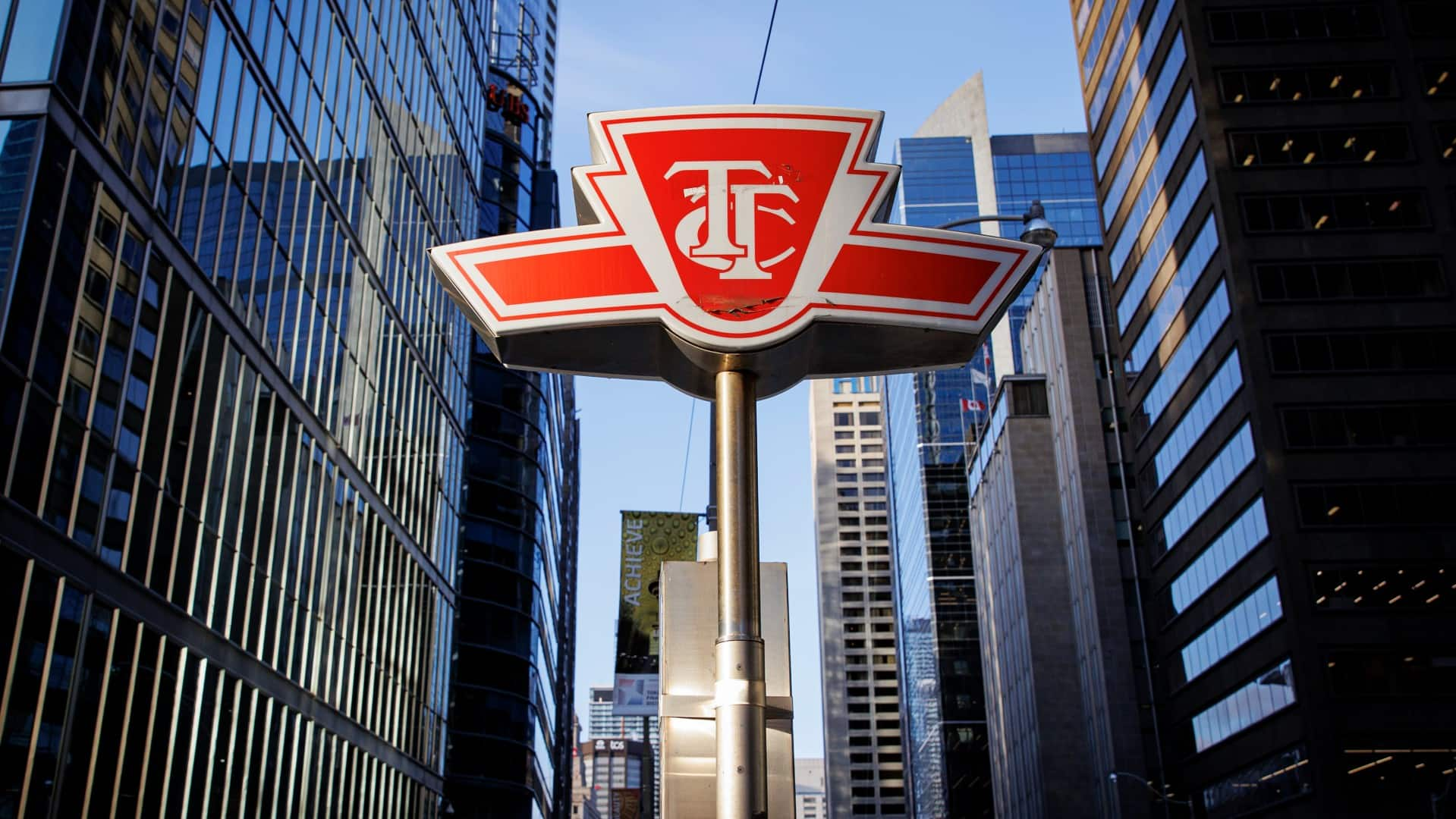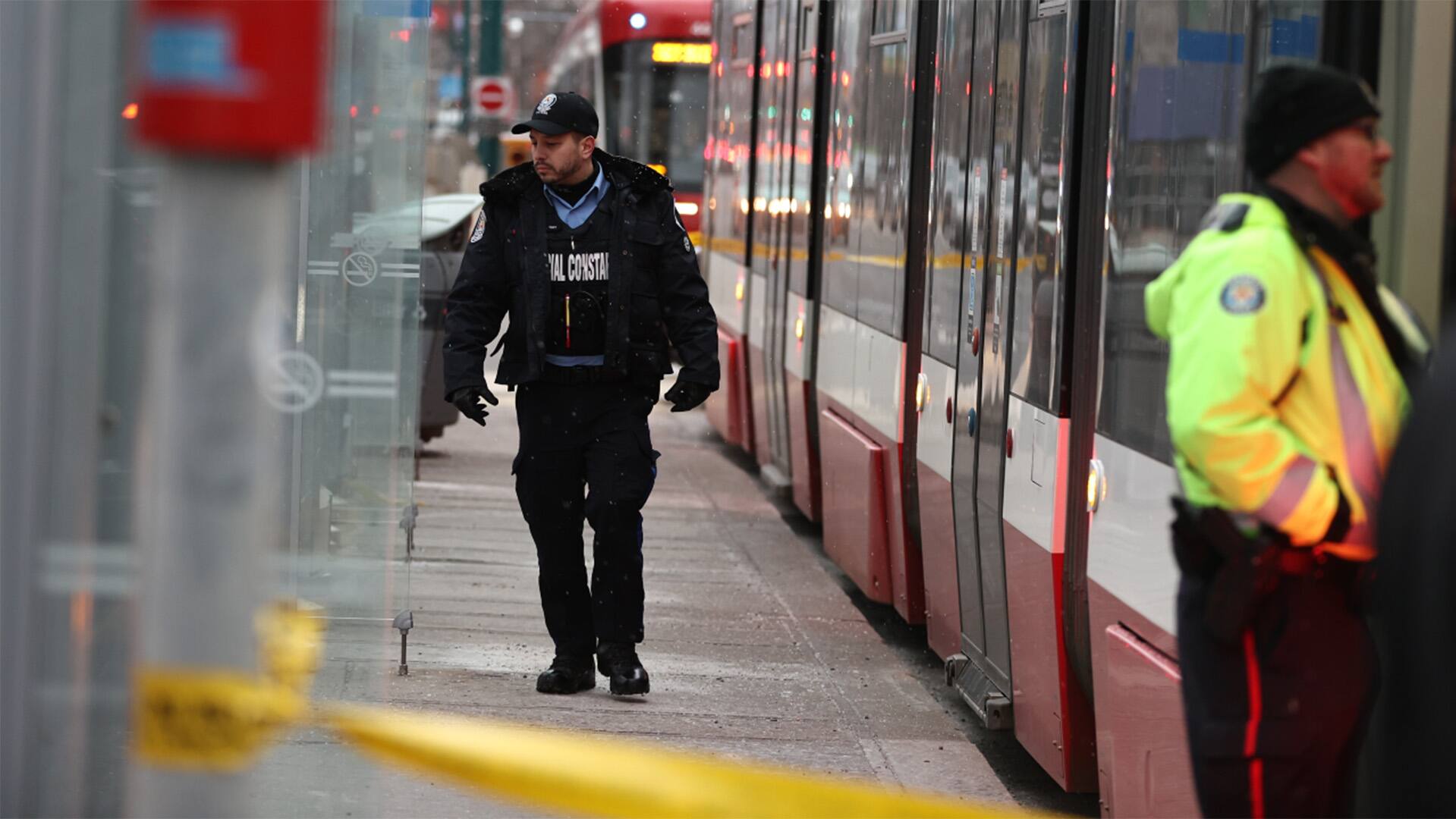Thank you for reading this post, don't forget to subscribe!

Does public transit really need more police?
Feb. 7, 2023 | Toronto police will increase their presence on city transit in response to recent violent incidents. Many say it won’t fix the problem. CBC News’s Katie Nicholson talks to Andrew Chang about what a hidden camera investigation revealed.
It starts when a man seated near the back of the 501 streetcar in Toronto breaks into a long, winding song about genitalia. It’s Monday at 4:30 p.m., and as the car travels along its route, which runs much of the city’s length east to west along Queen Street, the singing grows progressively louder.
The man, clearly becoming more agitated, then gets into a full blown argument with the empty seat across from him.
Some riders studiously ignore him, eyes locked on phones, the ceiling, or the floor as he raises his voice.
Mieka Smulders, seated a few rows ahead, had been cautiously looking back during the man’s song, but eventually got up and moved further away from him — and closer to an exit.
When she hops off at her stop, Smulders says it happens almost every day.

“The Queen streetcar is special. There should be more supports for a lot of people like the guy we just saw on there,” she said, noting that she often moves away from riders who make her feel uncomfortable.
“I don’t want to engage. I’m not equipped to do that. I feel bad for them.”
Toronto’s transit system has been rocked by a series of violent incidents over the last year: people pushed onto subway tracks, lit on fire, shot at with BB guns, stabbed, swarmed and otherwise assaulted.
It has shaken the TTC’s employees and commuters alike and prompted the city to add dozens more police officers to patrol the system — but some riders told CBC News they’re not convinced that increased policing is the best solution and noted a lack of social supports and seemingly fewer services like shelters and housing.
“I don’t think it’s a matter of more police,” Smulders said. “I think there should be more supports.”
WATCH | Toronto police announce more officers on TTC in wake of attacks:

Toronto to deploy more officers on TTC amid rise in violence
Toronto Police Chief Myron Demkiw says upwards of 80 officers will be deployed on public transit to enhance police safety after a surge of violent attacks. Read more: https://www.cbc.ca/1.6726802
TTC riders try to stay alert, de-escalate
As rush hour got underway, some vulnerable people on the 501 streetcar began to leave. Among them was an older man who seemed to become increasingly agitated with the sudden crush of commuters.
He pulled his ripped coat around his body and trudged out into the cold with his untied boots flopping around bare ankles as he clutched a mud-stained bag. But as the evening went on and the commuters thinned out, he and others begin to hop back on, some with weathered shopping bags, blankets and sleeping bags in tow.
Just after 8 p.m., a bearded man in a faded green jacket begins pacing near the back of the streetcar, thrusting his face at riders seated in the area before focusing on a younger group, stomping toward them, chest out.
“Do you want to fight? Do you want to fight?” He challenged the group.

They ignore him, the tallest man in the group angling his back to block the man’s path as they get up and move toward the middle of the street car, avoiding his gaze.
At their stop, two members of the group tell CBC News that as regular commuters they feel they’ve had to become experts in de-escalation.
“Honestly, it’s happening daily right now,” said Ramiro Montemayor.
“Like, you can’t just get on there and not be looking around; you’ve got to be alert about what’s going on because it’s not safe,” said Layla Siroj, who was riding the streetcar with Montemayor.
“I do feel bad because clearly with all the budget cuts to social services and things like that, people really are struggling, and having mental health struggles and not doing very well, but it can get dangerous — so all we can do is just move away,” she said.
‘A failure of social supports’
Montemayor and Siroj are also skeptical that increasing police on the TTC will fix the problems. Montemoyer suggests more supports for people who use drugs could help.
“I believe, most of the cases, it’s just people under the influence. So maybe something related to that, because I believe just heightened security [or] police … won’t change the people,” he said.
Siroj wants to see the city focus on investing in social supports.
“In reality, this is just a byproduct of a larger problem,” she said.
Some experts agree.
“This isn’t a TTC problem, but a failure of social supports broadly in society and the precarious nature of life that many people find themselves in,” said Dr. Sandy Simpson, chair of forensic psychiatry at Toronto’s Centre for Addiction and Mental Health.
“I’m slightly concerned about framing all the problems on TTC as being a mental health issue when there are clearly much wider issues at play here, as well as mental health.”

Those issues, Simpson says, include structural poverty, the lack of affordable housing, low disability payments, low wages, limited professional mental health supports and an abundance of toxic drugs available on the streets.
“It’s bigger than mental health alone,” Simpson said. “The worst disturbed behaviour that is seen may well be intoxication or it may be acute episodes of mental illness. And they can be hard to differentiate in the acute situation because methamphetamine and cocaine and the like do cause psychosis during the intoxication.”
Taken together, these are issues he says can’t be solved by the TTC and the City of Toronto alone.
Simpson points out that many unhoused people and people in crisis seek shelter and warmth on the TTC’s subway cars and inside stations in lieu of other places to go during the winter, and he says the majority of them are not violent.
Shelters serving Toronto’s underhoused population estimate there is a two to three thousand bed shortfall every night in the city.
Looking to other cities for solutions
While violence is top of mind for many passengers after several high-profile attacks over the last year, it’s not the only social issue visible on Toronto’s transit system. And Toronto is far from alone in the safety concerns and social problems playing out on its buses, trains and streetcars.
Several U.S. cities, including New York, Chicago and Atlanta are also deploying additional security and police officers in an effort to ease worries about transit safety, while Philadelphia will become the first U.S. transit system to use artificial intelligence to monitor riders for guns.

Christopher Herrmann, an assistant professor at the City University of New York’s John Jay College of Criminal Justice, says the public’s current fear about transit crime in New York City is disproportionate to the actual risk.
“You have a better chance of winning the Pick-6 lottery here in New York than you do of being a victim of serious violent crime on our subway system,” he said. “It just takes a few high profile events, unfortunately, to really get people concerned.”
Los Angeles stands in stark contrast to other U.S. cities. Faced with rising crime as ridership bounced back after the pandemic, the city decided to take a “community-centred approach” by piloting transit ambassadors, who ride its buses and trains.
Their duties include offering directions, de-escalating threats or alerting police or community services and connecting vulnerable riders with mental health and shelter services.

Expand supportive staff roles, advocate says
Shelagh Pizey-Allen, executive director of the advocacy group TTCriders, would like to see Toronto do something similar, rather than adding more police.
“We have been hearing loud and clear from Black and Indigenous and racialized transit users that special constables do not make them feel safe,” she said.
“Having more supportive staff around, more presence, is important, but why not expand supportive staff roles,” Pizey-Allen asked. “What about creating a welcoming staff role, someone you can go up to and ask for directions?”
For its part, in a statement to CBC News, the TTC says safety is one of its top priorities and acknowledges that increasing special constables, security, police presence and uniformed staff alone won’t address the problem.
LISTEN | The TTC responds to concerns about rider safety:

Here and Now Toronto7:37Addressing public concern while riding the TTC
There’s been a string of violent incidents on the TTC and it’s causing public safety concerns – both for riders and TTC staff. Guest host Manjula Selvarajah spoke with Stuart Green. He’s the spokesperson for the TTC.
“We also know that there are bigger societal and systemic issues at play when it comes to the root causes of these incidents that require a multi-pronged response.”
The agency said it relies on its employees and customers to alert it to people in distress and noted that it has recently added 20 community support teams who are dedicated to helping those who are underhoused.
It’s creeping toward 10 p.m. on a blistering cold night on the Eglinton West bus, which runs east to west in York region, north of downtown Toronto.
A rail thin woman stumbles on the bus, underdressed for the plunging temperature, clearly in distress, clutching her stomach and sometimes her head. She’s travelling with a man who lurches into the back row. The woman curls up near the door across two seats and passes out.
Some passengers sitting nearby get up and move to the front of the bus. No one offers help, and no police, TTC staff or outreach workers appear during the ride, despite the woman’s clear distress.
When the vehicle reaches its final stop, the man shakes the woman awake, and they walk unsteadily into the frigid air to wait for another bus.
